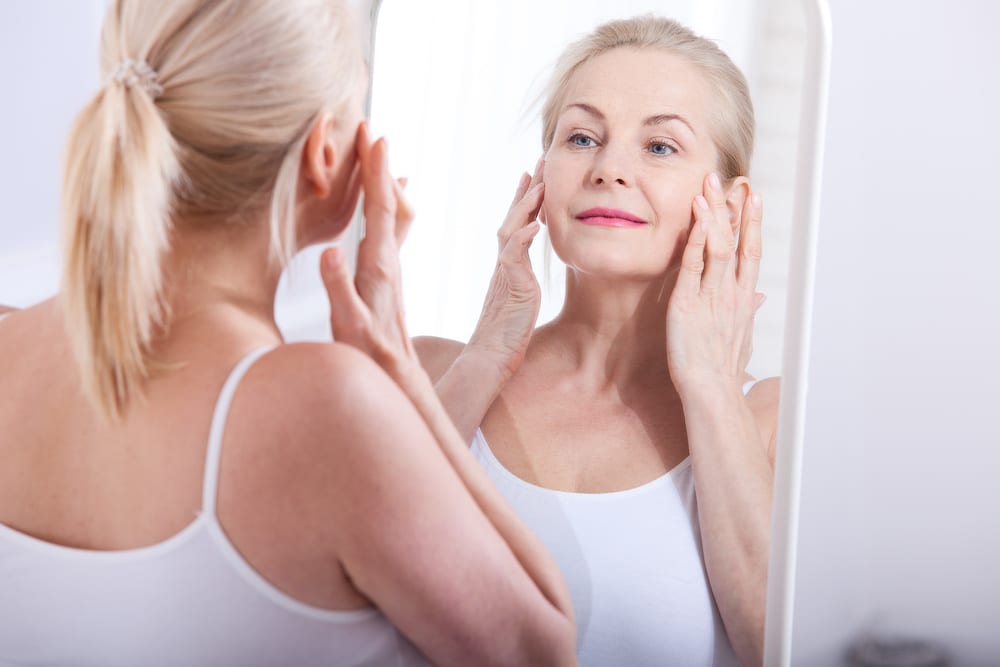Our skin, aside from forming the largest organ in the body, is responsible for providing us with a myriad of vital functions, ranging from shielding us from physical, thermal, solar, and viral threats to helping to regulate temperature and moisture levels, providing us with the ability to sense our physical environment, and helping to produce Vitamin D.
Given all these functions, it may seem strange that we typically focus on how our skin projects our physical vitality to others, and more specifically, with how resilient our skin’s surface is and how it maintains a healthy and youthful appearance. Even more particularly, we seek to minimize the lines, wrinkles, and stretch marks that develop naturally as we age.
The main components of the skin that are primarily responsible for a youthful appearance and help the skin resist the stretching that results in sagging, lines, and wrinkles are collagen and elastin.
Collagen and elastin are absolutely fundamental to the skin’s ability to remain resilient; they’re produced in the body. However, the body naturally reduces its production of both substances as we age, and this is the primary cause of loss of skin tone (which includes increasing looseness) as we age.
Skin will also stretch when the body gains excess weight – either through pregnancy or when gaining weight, either through a bad diet or as a natural part of aging. Healthy levels of collagen and elastin normally allow the skin to recover after giving birth or after losing weight, but this is not necessarily the case for those who become morbidly obese or maintain significant excess weight over many years.
Causes of Stretching
As we grow through childhood, adolescence, and adulthood, our skin obviously goes through a huge expansion. However, this occurs over an extended period, and our bodies are normally quite capable of managing this kind of change – our skin has the ability to grow with us. So, under normal circumstances, we all manage this kind of transformation without developing stretch marks.
Some people experience rapid growth spurts during puberty, gaining significantly in stature or weight, and this can also result in the development of stretch marks, even without being overweight. It’s also quite possible to develop stretch marks while being under-weight.
Stretch marks are a sign that skin has been over-stretched, either by rapid weight gain or by actual pulling of the skin. When skin is stretched beyond its normal range, the skin’s collagen reserves may be insufficient to allow the skin the recover, leading to the permanent scars we know as stretch marks.
Pregnant women are advised to apply specialized moisturizing products from early in their pregnancy – these can significantly reduce the chances of developing stretch marks.
Stretch Marks
Stretch marks are actually scarring caused by the over-extension or tearing of connective tissue in the middle layer of the skin. Stretch marks are often permanent, but they may lessen in appearance once the cause of the skin’s stretching has been eliminated. Even in cases when the skin remains stretched, stretch marks often lessen in appearance over time.
Hyperelastic Skin
Some people have skin that is able to stretch well beyond normal limits, typically due to the over-production of collagen by the body. While they may be somewhat less prone to developing stretch marks, Hyperelastic skin can be caused by a number of different conditions and is often accompanied by joint problems. This condition can’t be directly treated; however, depending on the cause, it may be possible to manage it via medication and physical therapy.
Minimizing the Appearance of Stretch Marks
There are some indications that topical creams and ointments can help to minimize the appearance of stretch marks – especially those containing Vitamin A. Some believe that aloe vera offers a way to reduce the appearance of stretch marks, but we’d suggest using products that contain hyaluronic acid, which stimulates the body’s production of collagen.
Tightening Loose Skin
Laser therapy can be used as a safe and non-invasive way to tighten loose skin – it can rearrange and shrink the skin’s collagen fibers, but it also stimulates the body to create extra collagen, which is essential to maintaining healthy skin.
Your Laser Skin Care
Your Laser Skin Care is highly experienced in the application of multiple non-invasive cosmetic procedures, including laser skin tightening. We specialize in combining various products to achieve the best results – not only to find the most effective but also the most cost-effective solution. We can advise you on the most appropriate non-invasive procedures to help you achieve your cosmetic goals. We’re also happy to answer any questions you may have on the most effective ways to address whatever cosmetic problems trouble you. Call us at (323) 525-1516 to schedule a free consultation or visit us online for more information.


